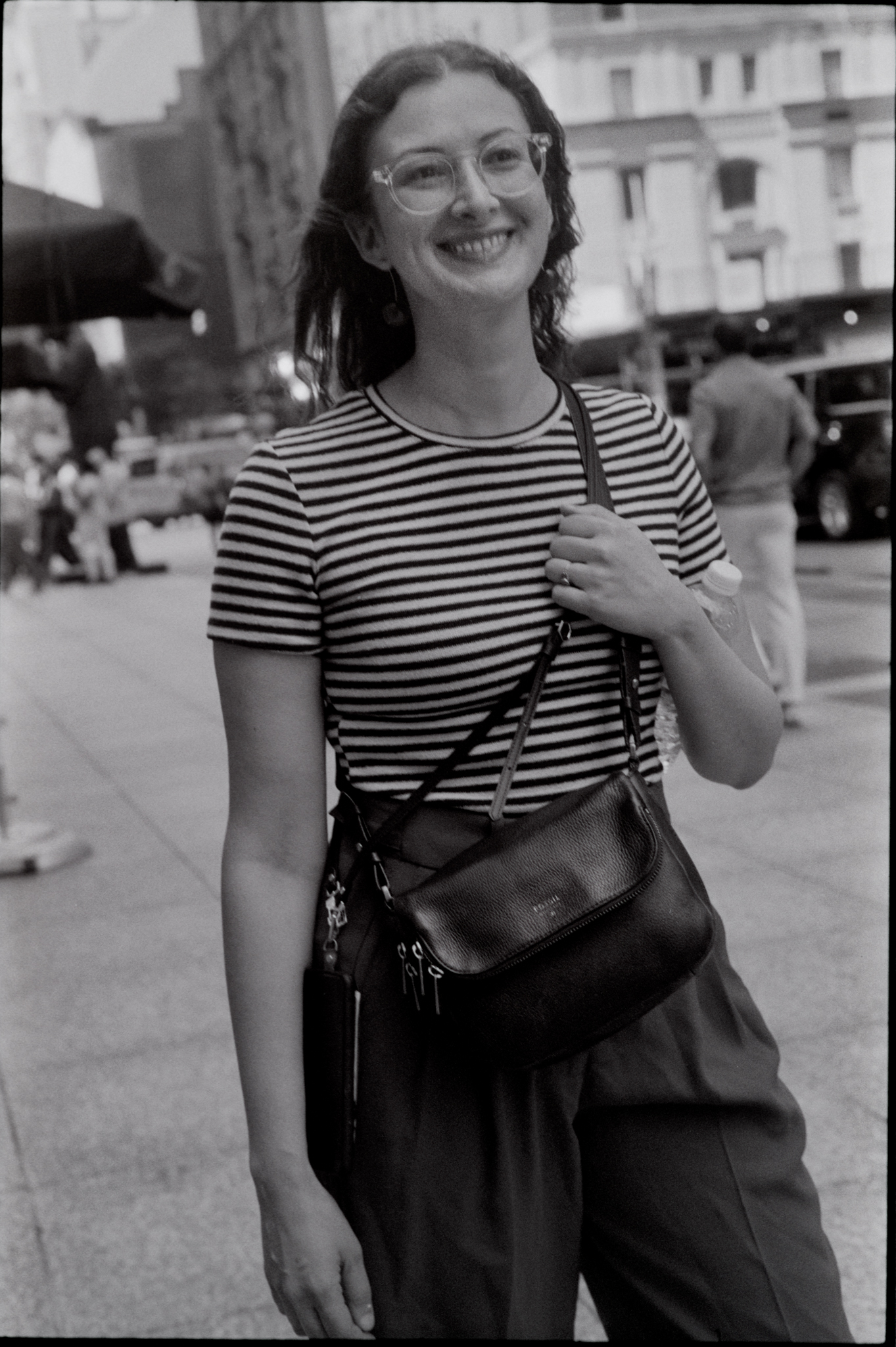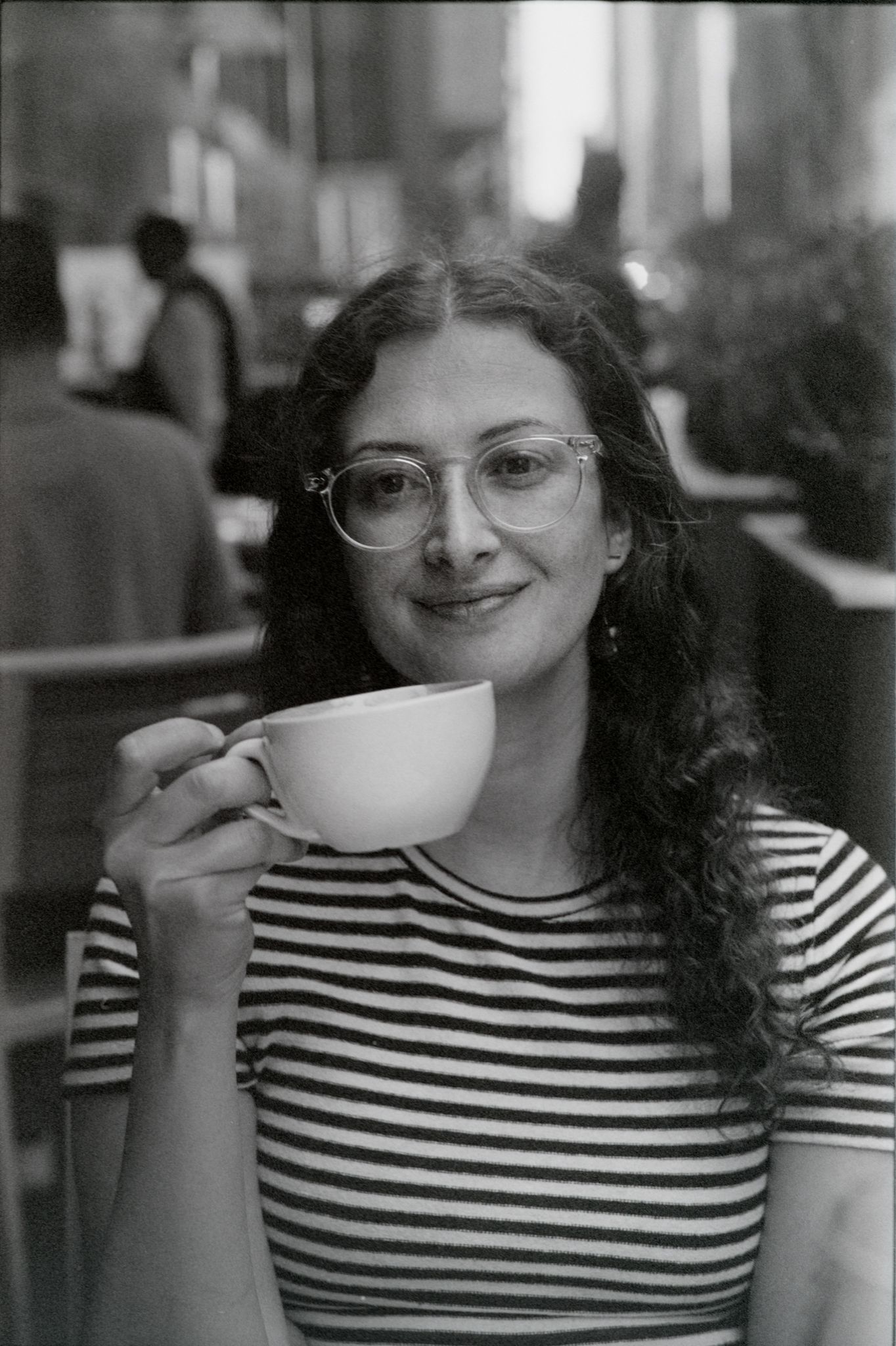
Dear reader,
I didn’t think I’d become a painter.
When I was four years old, I told my parents I wanted to be a dessinatrice—a graphite artist. I didn’t know what that fully meant, only that I wanted to spend my life with pencils in hand, in a quiet room, making images appear where there was once only blankness, until late in the night. It felt like a kind of peaceful magic, and it still does.
But life, as it often does, led me through a long and scenic route.
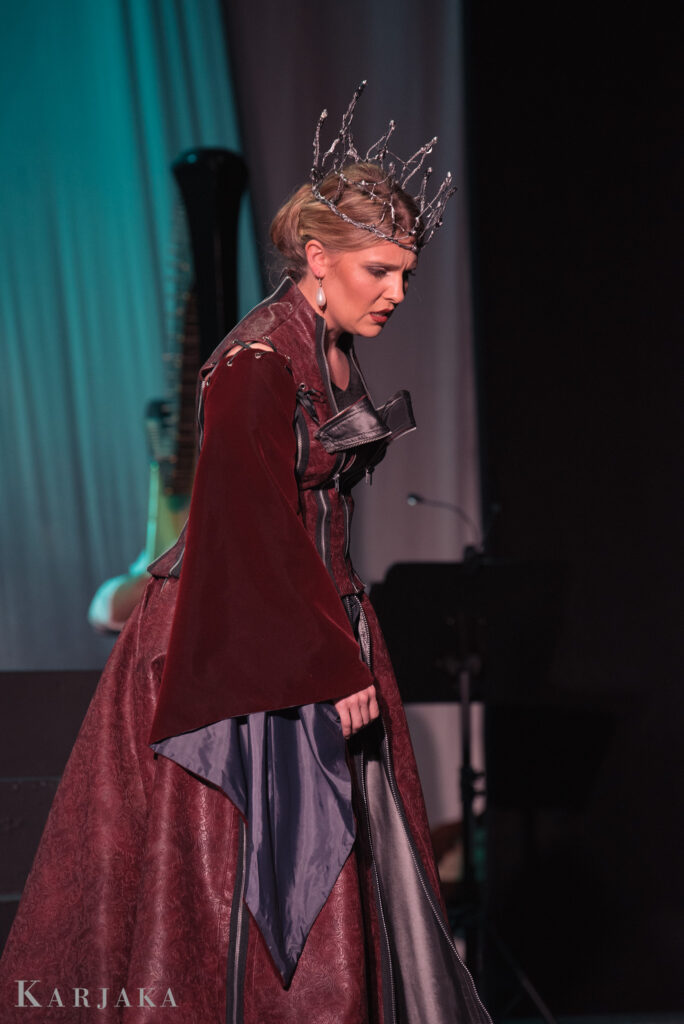
Before I became a visual artist, I spent years designing costumes for the opera. And before that—perhaps more surprisingly—I earned a PhD in biology. I spent my early adulthood in labs, analyzing data, reading scientific papers. I loved the precision of it, the intellectual challenge. But I dreamt every day for something artistic: drawing, acting, dancing, designing. I wasn’t sure.
Eventually, science gave way to the stage. I pivoted into historical costume design, where I could still research and study detail. I spent a decade designing for live performances. It was its own kind of drawing—just with fabric, silhouette, and historical echoes. I was still telling stories through visuals, still sculpting emotion through line and form. There was grandeur and rigor and beauty in that world. But there was also other people’s words, music and ambitions. Scripts. Deadlines. Collaboration. Many, many other figures and conditions.
And then something shifted. Not all at once, but gently—like fog lifting. A strong will for independence.
To anyone on the cusp of a creative “left turn,” I want to say: the path doesn’t disappear behind you when you veer. It just folds into the next one. I still use everything I learned from my previous lives. It’s all there in my work.
If drawing was always there, painting arrived like a surprise visitor I hadn’t invited but quickly fell in love with. It felt too ambitious, even a little arrogant. But it also felt natural.
And somewhere in this rediscovery, Pierrot emerged.
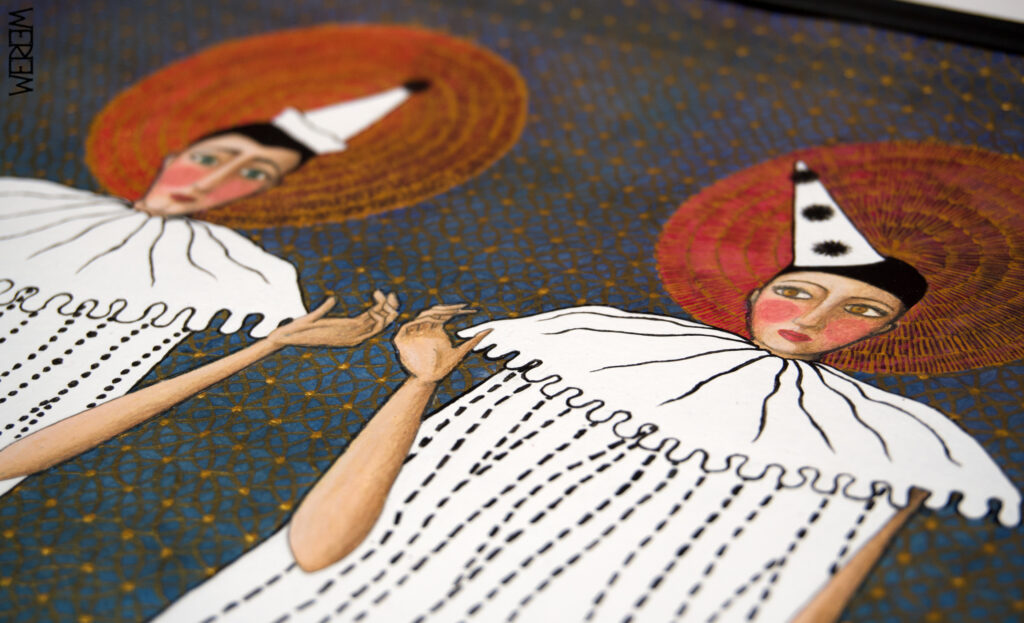
He wasn’t new to me. He’d been part of the cultural wallpaper of my childhood in France: the melancholic theatrical figure in white, always an outsider, always daydreaming. I must have absorbed him like a lullaby you don’t realize you know by heart. He had become an extension of my inner life. His sadness, his sensitivity, his poetry.
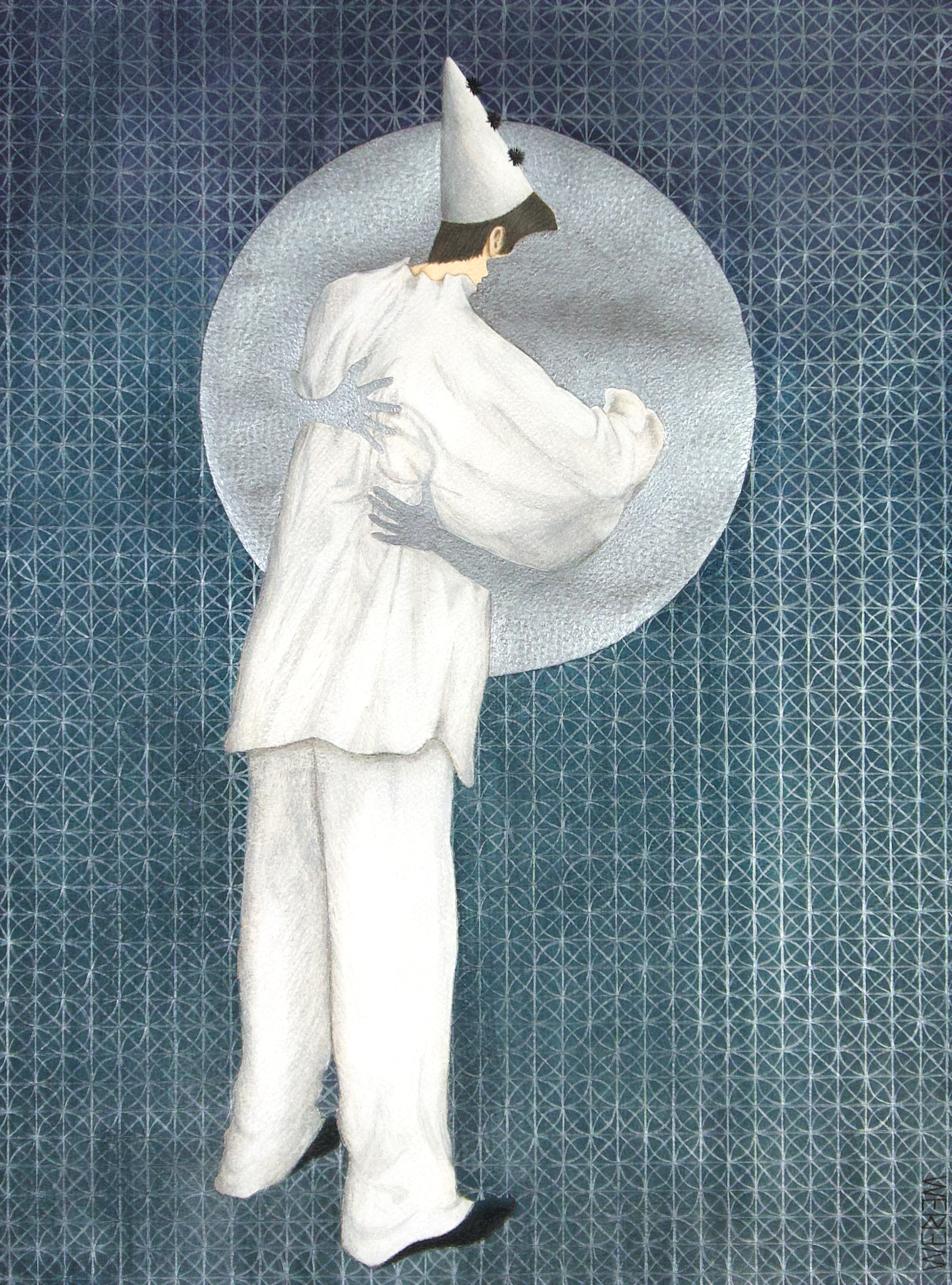
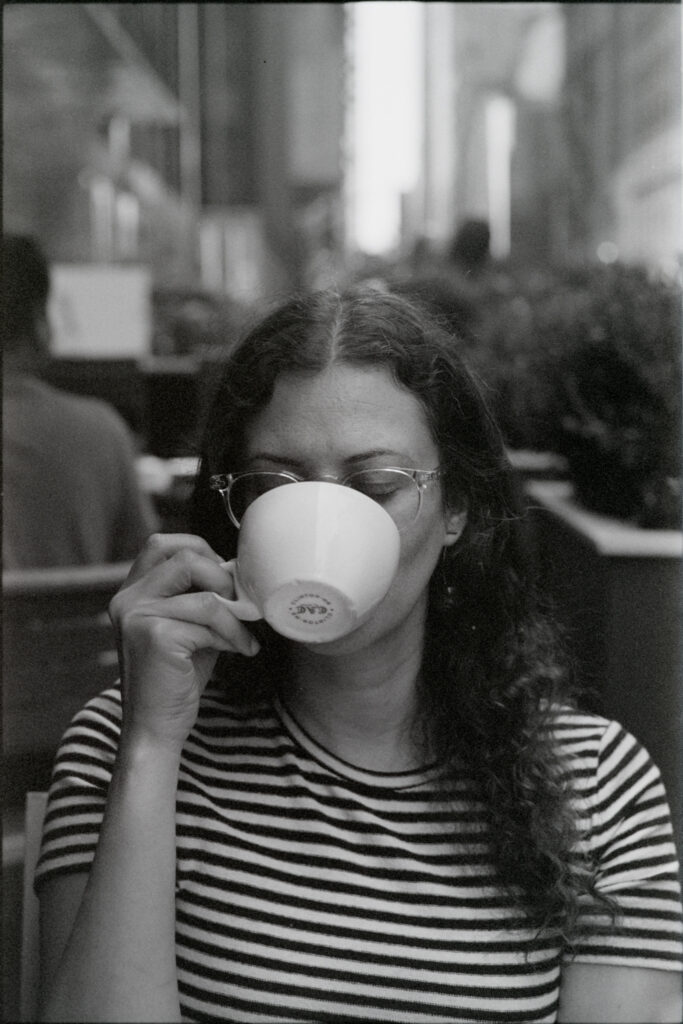
Painting him became a form of emotional translation. I felt like I was having a private conversation with the past, with myself, with something wordless and essential. It’s not just about aesthetics—it’s about vulnerability. The courage to sit with yourself long enough.
If you are wrestling with the desire to do something “different” with your life, I want to say: you probably already know what you are. You’ve probably known for a long time. But knowing isn’t always loud.
What surprised me wasn’t that I became an artist—I felt like I always was, in secret. What surprised me was that I finally made room for the quieter parts of myself to take center stage.
And it turns out, I have a lot to say.
Pay attention. These small whispers matter. They may not make sense at first. Follow them.
You may end up somewhere you never expected. You may even end up more yourself.
With affection from the other side of the turn,
Weriem
